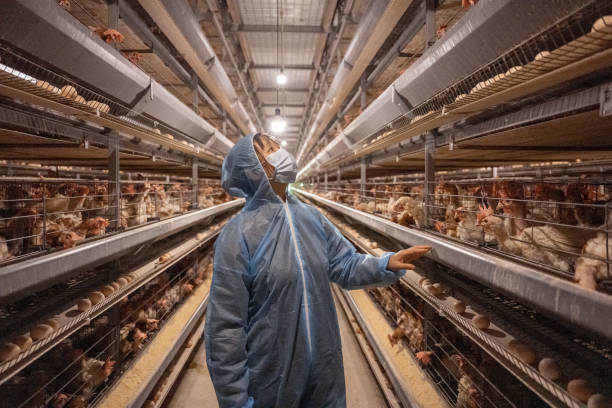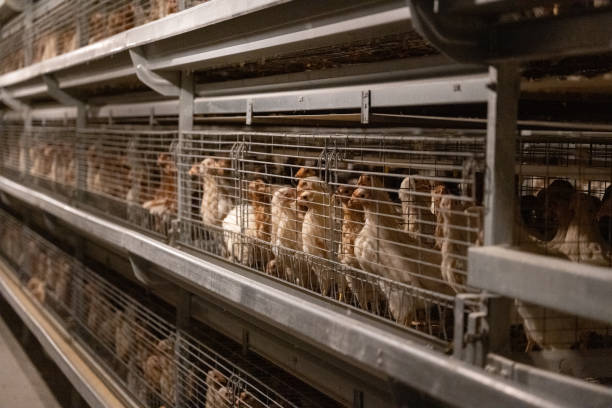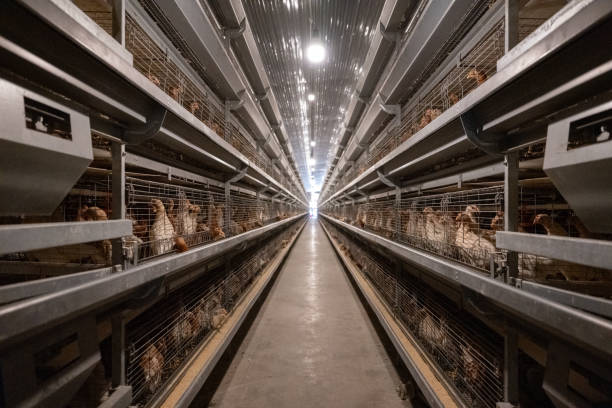
Brooder Cage Business Plan: Understanding Start-up Costs in Africa
Brooder Cage Business Plan: Understanding Start-up Costs in Africa
Starting a poultry business, specifically one centered around brooder cages in Africa, holds immense potential. The demand for poultry products is steadily rising, fueled by population growth and evolving dietary preferences. However, before diving headfirst into this venture, a solid business plan is paramount. A critical component of such a plan is a thorough understanding of the start-up costs involved. This article will delve into the various expenses you’ll encounter when establishing a brooder cage business in Africa, providing insights to help you budget effectively and increase your chances of success.
Market Research and Feasibility Studies: Laying the Foundation
Before even thinking about cages or chicks, the first step is conducting comprehensive market research. This involves understanding the local demand for poultry, identifying your target market (e.g., small-scale farmers, larger commercial operations), analyzing the competition, and determining the optimal pricing strategy.
Don’t underestimate the cost of this crucial step. You might need to hire researchers, conduct surveys, or purchase market reports. This initial investment, though often overlooked, can save you substantial money and heartache in the long run by preventing you from entering a saturated or unprofitable market.
Feasibility studies go hand-in-hand with market research. These studies assess the technical, economic, and environmental viability of your project. They might involve evaluating the availability of land, water, and electricity, as well as assessing the potential impact of your operation on the surrounding environment. Consulting with agricultural experts and engaging in proper soil testing are essential elements of a comprehensive feasibility study. Depending on the scale of your operation and the complexity of the local regulations, feasibility studies can represent a significant initial cost.

Land Acquisition and Preparation: Securing Your Base
The cost of land is a major variable, heavily influenced by location. Urban areas and regions with fertile soil command higher prices. When scouting locations, consider accessibility to markets, proximity to suppliers, and the availability of infrastructure like roads and electricity. Remember to account for legal fees, surveying costs, and any necessary permits associated with land acquisition.
Once you’ve secured the land, it needs to be prepared for construction. This might involve clearing vegetation, leveling the ground, and ensuring proper drainage. The cost of these activities depends on the terrain and the extent of the work required. Consider hiring a reputable contractor with experience in agricultural construction to ensure the job is done correctly and efficiently.
Brooder Cage Systems: Investing in Quality Infrastructure
The brooder cage system itself represents a significant upfront investment. The type of cage you choose will significantly impact your costs. Traditional, locally fabricated cages might seem cheaper initially, but they often lack the durability, hygiene, and temperature control of modern, commercially manufactured cages.
Investing in high-quality brooder cages from reliable suppliers like Livi Machinery, even if it requires a larger initial outlay, is often more cost-effective in the long run. These cages are designed for optimal chick comfort, hygiene, and disease prevention, leading to higher survival rates and faster growth. They are also typically more durable and require less maintenance, reducing long-term operating costs.
Consider cages made of galvanized steel. Galvanized cages are rust-resistant. And in African hot climate, zinc coating gives the cage a much longer lifespan and saves money on labor costs for constantly replacing damaged or corroated cages.
The cost of brooder cages will also depend on the size of your operation and the number of chicks you plan to raise. Factor in the costs of transportation, installation, and any necessary accessories, such as feeders, drinkers, and heating systems.
Construction and Infrastructure: Building the Foundation
Beyond the cages themselves, you’ll need to construct or adapt a building to house your brooder operation. The size and complexity of the building will depend on the scale of your operation and the local climate.
Consider factors such as ventilation, insulation, and lighting. Proper ventilation is crucial for maintaining air quality and preventing respiratory diseases. Insulation helps regulate temperature, reducing energy costs for heating and cooling. Adequate lighting is essential for chick growth and development.
The cost of construction will vary depending on the materials used, the local labor rates, and the availability of skilled workers. Invest in durable, weather-resistant materials to minimize maintenance costs. Also, building a smart chicken house, will ensure that your investment is protected from the adverse elements and will withstand the elements and stand the test of time.
Chicks: The Core of Your Business
The cost of day-old chicks is a recurring expense, but it’s essential to factor it into your initial budget. The breed of chick you choose will influence the price. Consider locally adapted breeds that are resistant to common diseases and thrive in the local climate.
It’s crucial to source chicks from reputable hatcheries that guarantee the health and quality of their birds. This might involve paying a premium, but it’s worth it to minimize the risk of disease outbreaks and poor growth performance. Ensure that your hatchery provides documentation of vaccination and health certificates. The additional upfront investment reduces longer-term risks.
Feeding: Fueling Growth
Feed is another significant recurring expense. The type of feed you use will impact the growth rate and overall health of your chicks. Invest in high-quality starter feed that is specifically formulated for young chicks.
Consider sourcing feed locally to reduce transportation costs. However, ensure that the quality of the feed meets your requirements. You might need to supplement local feed with vitamins and minerals to ensure optimal nutrition. Formulating your own feed can be cost-effective, but it requires expertise and careful attention to detail.
Equipment and Supplies: Essential Tools for Success
In addition to the brooder cages, you’ll need a range of other equipment and supplies, including:
Heating Systems: Brooder chicks require a warm environment, especially during the first few weeks of life. Invest in reliable heating systems, such as gas brooders or electric heat lamps.
Ventilation Systems: As mentioned earlier, proper ventilation is crucial for maintaining air quality. Consider investing in fans or exhaust systems to ensure adequate airflow.
Watering Systems: Provide chicks with access to clean, fresh water at all times. Automatic watering systems can be more efficient and hygienic than manual systems.
Feeding Troughs: Choose feeding troughs that are appropriately sized for chicks and easy to clean.
Cleaning Supplies: Maintain a clean and hygienic environment to prevent disease outbreaks. Invest in disinfectants, brushes, and other cleaning supplies.
Medications and Vaccines: Develop a preventative health program and stock up on necessary medications and vaccines.
Record-Keeping Supplies: Keep detailed records of chick mortality, feed consumption, and other important data.

Labor Costs: Building Your Team
Labor costs will depend on the size of your operation and the local labor market. Consider hiring trained poultry workers who have experience in managing brooder operations.
Factor in wages, benefits, and training costs. Provide your workers with adequate protective equipment to ensure their safety. Investing in training for your staff can significantly improve their productivity and reduce the risk of errors.
Utilities: Powering Your Operation
Electricity, water, and gas are essential utilities for a brooder cage operation. The cost of these utilities will depend on your location and the efficiency of your equipment.
Invest in energy-efficient lighting and heating systems to reduce electricity costs. Consider installing a water harvesting system to reduce water costs. Explore alternative energy sources, such as solar power, to reduce your reliance on the grid and lower your overall utility costs.
Permits and Licenses: Navigating the Regulatory Landscape
Obtaining the necessary permits and licenses is essential for operating a legal and compliant brooder cage business. The specific requirements will vary depending on your location.
Factor in the costs of application fees, inspections, and any necessary legal assistance. Ensure that you comply with all environmental regulations. Failing to obtain the necessary permits and licenses can result in fines, penalties, and even closure of your operation.
Marketing and Sales: Reaching Your Customers
Marketing is critical for reaching your target market and selling your poultry products. Develop a marketing plan that includes both online and offline strategies.
Consider advertising in local newspapers, radio stations, or agricultural publications. Attend agricultural fairs and trade shows to promote your business. Build relationships with local retailers and restaurants. Establish an online presence through a website or social media. Marketing, even if not immediately yielding sales, builds a relationship of trust between your brand and the customer.
Contingency Fund: Preparing for the Unexpected
It’s essential to set aside a contingency fund to cover unexpected expenses, such as disease outbreaks, equipment breakdowns, or fluctuations in market prices. A general rule of thumb is to allocate at least 10% of your total start-up costs to a contingency fund.
Having a contingency fund can help you weather unexpected challenges and prevent your business from failing. It provides a financial buffer that allows you to adapt to changing circumstances.
Conclusion: A Strategic Investment

Starting a brooder cage business in Africa can be a profitable venture, but it requires careful planning and a thorough understanding of the costs involved. By conducting comprehensive market research, investing in quality infrastructure, managing your expenses effectively, and preparing for the unexpected, you can increase your chances of success. Remember to partner with reputable suppliers like Livi Machinery to ensure you have access to the best equipment and technical support. The key is to view the start-up costs not as mere expenses, but as strategic investments in the future of your poultry business. With a well-executed business plan and a commitment to quality, you can establish a thriving brooder cage operation that contributes to the growing poultry industry in Africa.
